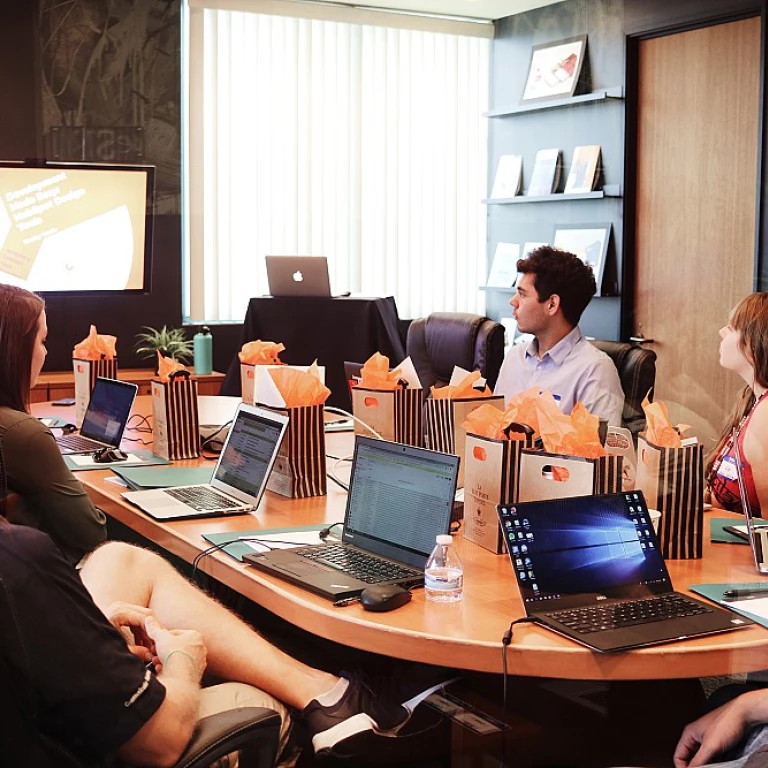
Understanding Video-Based Training Solutions
The Modern Approach to Upskilling
In the fast-paced corporate environment, employees are continuously seeking opportunities to advance their skillsets. One of the innovative solutions gaining traction is video-based training. This modern approach presents a flexible and engaging learning experience, providing learners the chance to enhance their capabilities through high-quality video content.What Defines Video-Based Training?
Video-based training encompasses various educational methods, where video content takes center stage. This approach includes training videos, interactive videos, and comprehensive elearning courses that collectively create an immersive learning experience. Learners engage with visually rich content that makes complex topics easier to grasp, turning learning into a more dynamic process. With the added benefit of learning at one's own pace, videos offer a time-efficient solution for skill acquisition.Key Features of Video-Based Learning
- Engaging Content: Video content has the power to captivate learners through its interactive nature, making it easier to retain information and apply it in real-world scenarios.
- Flexibility and Accessibility: One of the main advantages of video learning is its 24/7 availability. Employees can access training programs anytime from any device, fostering a continuous learning environment.
- Diverse Formats: From animation to real-life examples, video-based learning incorporates various formats that cater to different learning styles.
Incorporating these elements allows corporate training programs to become not only a process of knowledge acquisition but also an engaging journey of personal and professional development. To explore more on modern approaches to upskilling, click here on microlearning’s impact. This in-depth look will further inform your understanding of the various methods that enrich the development of skills in today's ever-evolving corporate landscape.
The Role of Video in Upskilling
The Power of Video in Learning
Video has emerged as a powerful tool in the realm of learning and development, particularly in corporate training and upskilling initiatives. This shift is largely due to the engaging and dynamic nature of video content, which has proven to facilitate an enhanced learning experience for employees.
Interactive videos serve as a key component in capturing the attention of learners. They allow employees to immerse themselves in the learning content, providing them with a more hands-on, practical understanding of the subject matter. Video-based training solutions offer the flexibility to create a diverse range of content, from step-by-step tutorials to comprehensive courses that cover complex topics.
The Advantages of Video in Upskilling
- Engagement: Videos hold the power to transform traditional, mundane corporate training sessions into exciting learning experiences by incorporating elements like animations and interactive segments.
- Retained Information: Video learning contributes to higher knowledge retention rates. Studies have shown that learners are likely to remember video content more vividly over time compared to text-based learning solutions.
- Flexibility and Accessibility: With video-based training, employees can learn at their own pace and revisit complex topics as needed. This flexibility ensures that employees can integrate learning into their work schedules without time pressures.
By utilizing training videos, companies can mold an effective learning corporate culture, encouraging continuous development among employees. This approach not only aids in skill enhancement but also in keeping pace with the constantly evolving landscape of corporate training technologies.
Interactive Learning and Personalization
Implementing interactive video training allows organizations to cater to personalized learning pathways, meeting the unique developmental needs of their workforce. This method of video learning also provides real-time feedback and assessments, enabling learners to evaluate their progress throughout the training process.
Video-based learning solutions can be customized to align with the specific goals and objectives of corporate training programs. By implementing these video content strategies, businesses can ensure that their employees are equipped with the necessary skills, thereby fostering a robust environment for corporate growth and transformation.
For more insights on leveraging learning solutions, visit our guide on navigating effective upskilling.
Implementing Video-Based Training in the Workplace
Strategically Integrating Video Learning in the Workplace
Implementing video-based training in a corporate setting requires a strategic approach to ensure it aligns with the organizational goals and meets employees' development needs. To proceed effectively, companies must first evaluate their existing training programs and identify areas where video content can enhance the learning experience. To create a seamless integration, consider these key steps:- Assessing Training Needs: Evaluate which skills require reinforcement and the specific knowledge areas that need expansion among employees. This helps in pinpointing where video-based solutions will be most effective.
- Choosing Suitable Content: Select or create video content that is directly related to the learning objectives. Content should be engaging and capable of providing a comprehensive learning experience.
- Leveraging Interactive Features: Utilize interactive video elements to enhance learner engagement. Incorporate quizzes, scenarios, and branching narratives to provide an immersive learning journey.
- Aligning with Corporate Training Goals: Ensure that video-based learning aligns with broader corporate objectives. This alignment fosters a supportive environment for video training solutions.
- Institutionalizing Periodic Reviews: Regularly assess the effectiveness of training videos and make necessary updates to remain relevant with evolving industry standards and technologies.
Challenges and Solutions in Video-Based Training
Addressing Challenges in Video Learning Techniques
Implementing video-based training solutions in a corporate setting can bring about various obstacles, but understanding these can help organizations forge a path toward effective learning experiences. Here’s a closer look at some of these challenges and their potential solutions:- Content Overload: With the vast amount of video content available, learners may feel overwhelmed. To counteract this, it’s crucial to curate the content. Focus on quality over quantity by selecting videos that precisely align with the learning objectives and the employees’ development needs.
- Engagement Levels: It can be challenging to keep employees engaged with video-based learning. Incorporating interactive elements, such as quizzes and discussions embedded within the videos, can elevate the learning experience and ensure high engagement levels.
- Technology and Accessibility Issues: Not all employees may have access to the necessary technology or may face connectivity issues. Organizations need to ensure that their training technologies are accessible and compatible with multiple devices to accommodate all learners.
- Feedback Mechanisms: Providing immediate feedback is essential for effective skill development. Incorporating interactive videos with real-time feedback capabilities enables learners to gauge their understanding and apply knowledge progressively, enhancing the overall training process.
- Consistency Across Training Programs: Maintaining a standard level of quality and consistency across different corporate training videos can be taxing. Developing a guideline for creating video content ensures uniformity in learning solutions, helping learners transition smoothly between various training programs.












